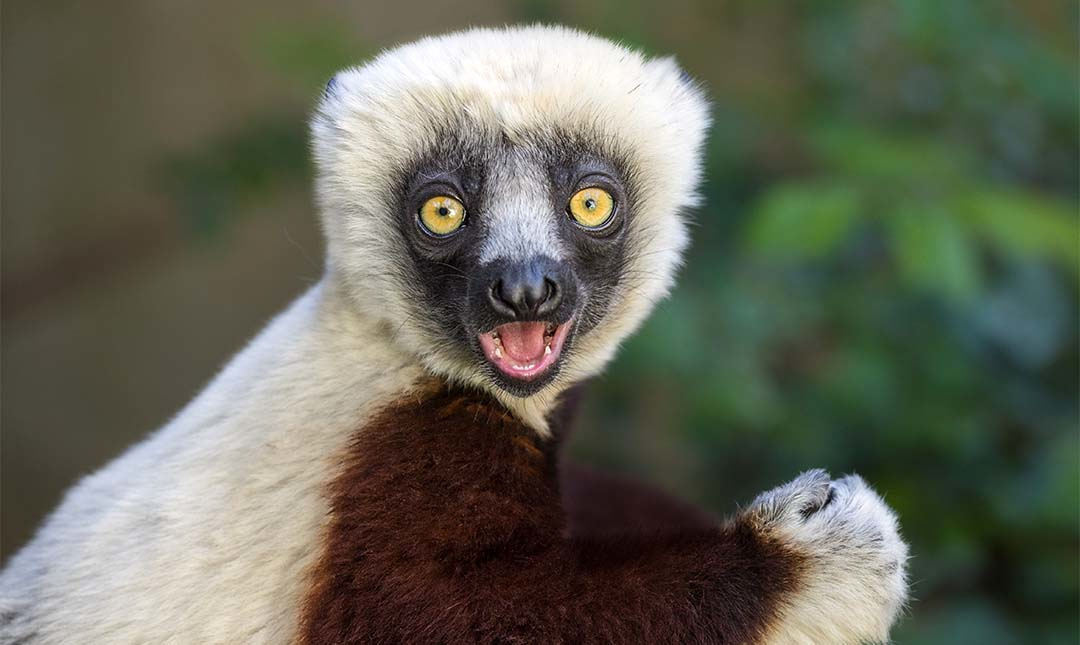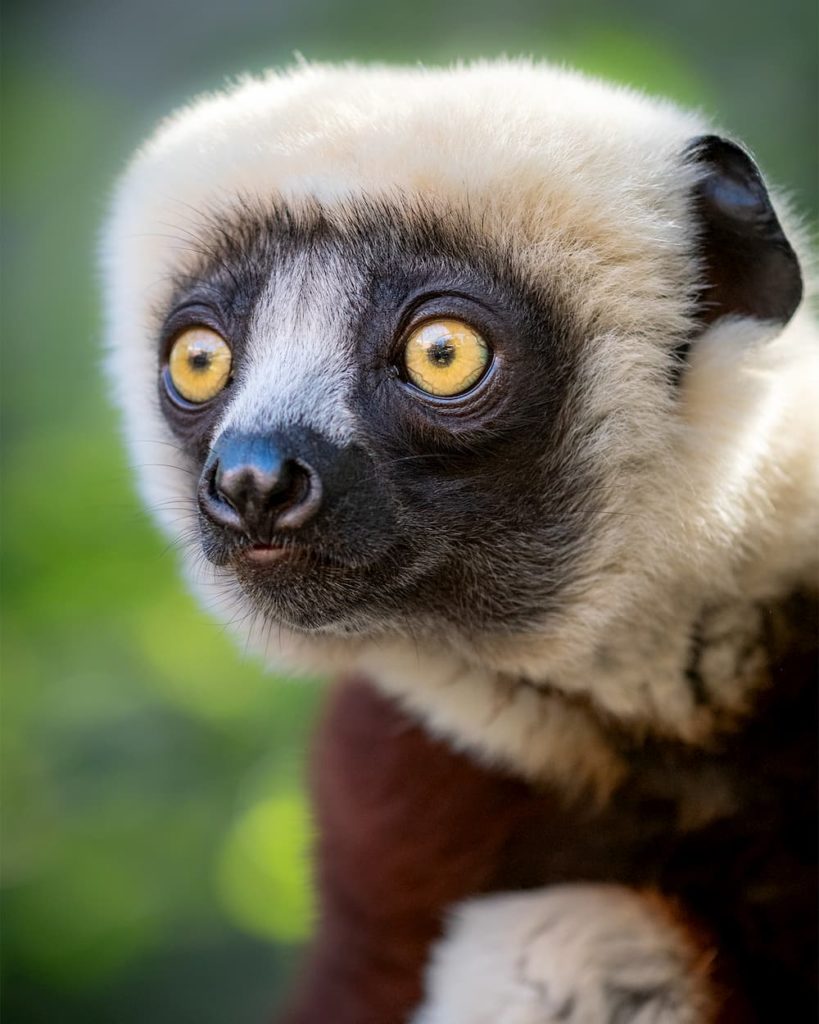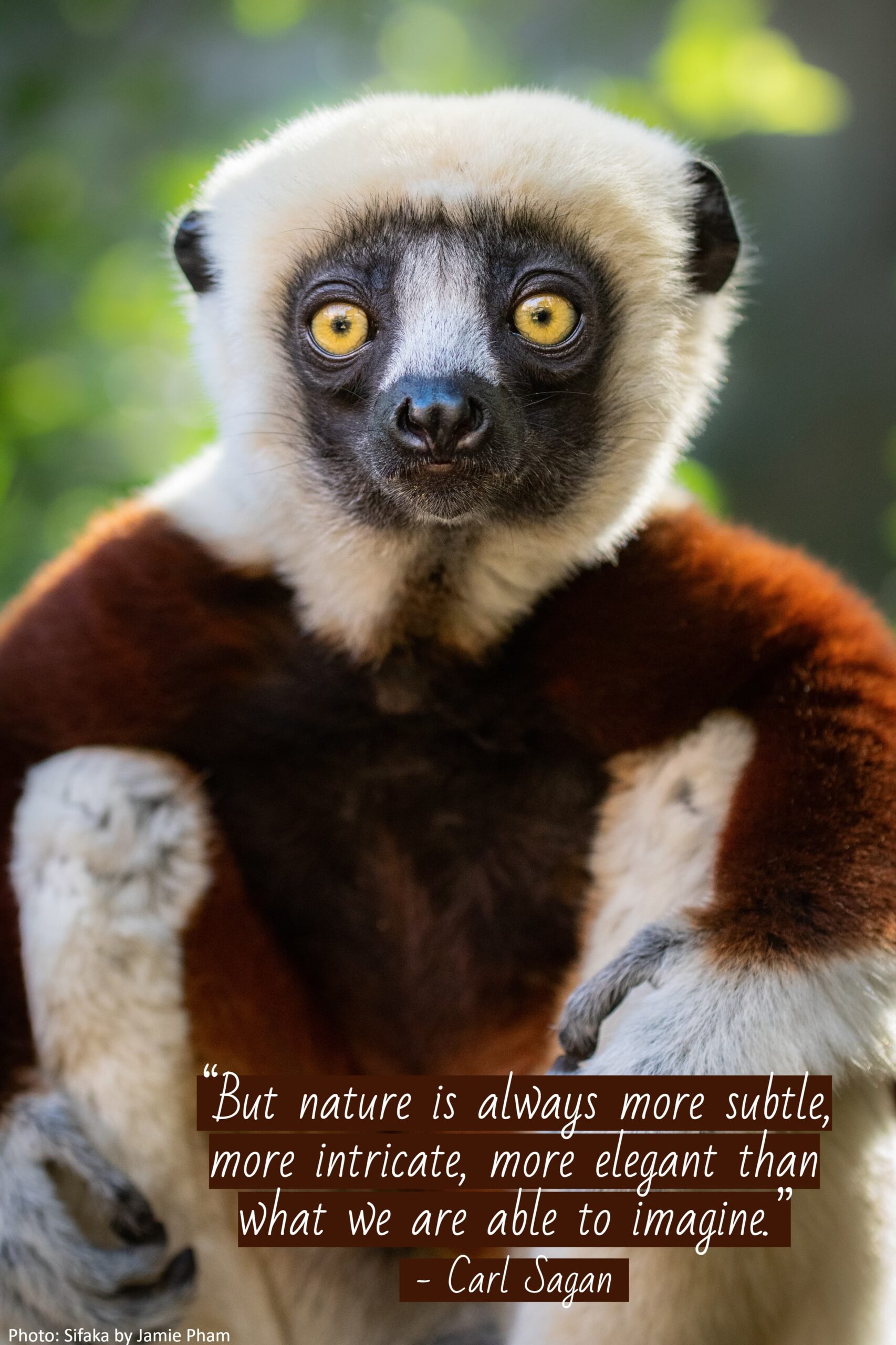About
Sifakas move through the trees leaping 20 to 30 feet in a single jump. Preferring to remain high in the tree canopy, they descend to the ground only occasionally. When they do venture down, they bound on two legs (bipedally) in a skipping-like dance with their forelimbs and tails used for balance. The name sifaka comes from the call these primates makes as they travel through the trees: “shee-FAHK!” They are found only in Madagascar, an island off the eastern coast of Africa.
Sifakas belong to an early group of primates called lemurs. Like other lemurs, they have muzzles and moist noses because they rely on their sense of smell more than their vision. Whiskers (vibrissae) enhance their sense of touch. Sifakas have bodies designed for their arboreal lifestyle. Hands and feet are especially adapted for climbing and leaping. The opposable big toe is long and stout, and the hands are elongated and hook-like. Sifakas have grooming claws on the second digits of their feet. A tooth comb is used both to groom and to scrape or gouge food. Both sexes scent-mark their territories.
Despite their size, sifakas can support themselves on thin outer branches in order to reach food. They live in small groups of two to ten individuals usually with an equal number of males and females. Females typically remain in the groups where they were born (natal group), but males transfer between groups. Females dominate males during foraging and other activities. Males tend to stay close to females and will challenge other males for dominance only during the mating season. Females seem to mate only with the dominant male. For about a month after birth, infant sifakas hold on to their mothers’ bellies, eventually graduating to riding on their backs.
As of 2018, the Coquerel’s sifaka was suspected to have undergone a population decline of 80% in the previous 30 years, due mainly to increased deforestation in the dry forests. These primates are only found in two regions of Madagascar, both of which have been damaged by yearly fires set by nearby farmers. Unlike with some reforestation projects, dry forests are impossible to regenerate once they are gone. Sifakas also fall victim to predators, namely the fossa, the Madagascar harrier-hawk, and Madagascan tree boa.



habitat
Found in a relatively small, forested area in Madagascar, they typically inhabit tropical dry lowland forest, mixed deciduous and evergreen forests, and dry brush and scrub areas adjacent to primary forests.
diet
Young leaves, flowers, fruit, bark, and dead wood in the wet season and mature leaves and buds in the dry season. Sifakas rarely drink, because they get most of the water they need from the plants they eat.
physical characteristics
Body length 16 to 20 inches. Tail is long (19 to 23) inches but not prehensile. Weight is 8 to 9 pounds. Females are slightly larger. Lifespan can be up to 30 years.
Location Within the Zoo
You’ll find this animal in the Africa loop by Mahale Cafe. See Zoo Map.




